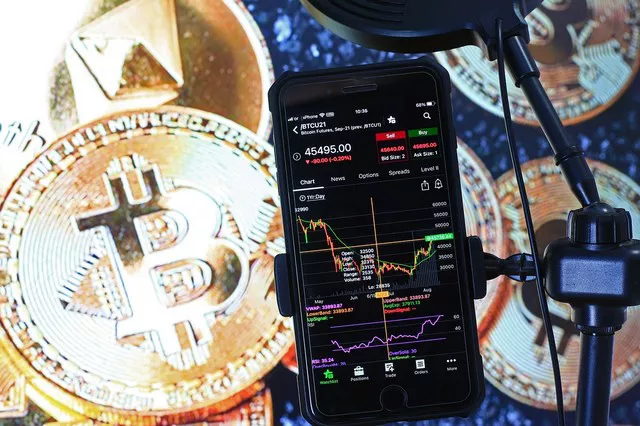Introduction
In the realm of financial markets, understanding the intricacies of various instruments is crucial for investors and traders alike. Among the plethora of options available, E-mini S&P 500 futures stand out as a popular choice for both seasoned professionals and newcomers to the trading arena. This article aims to provide a comprehensive overview of how E-mini S&P 500 futures work, delving into their mechanics, benefits, and practical implications for traders.
1. Overview of E-mini S&P 500 Futures
E-mini S&P 500 futures represent a derivative contract based on the Standard & Poor’s 500 Index (S&P 500), which is a benchmark index comprising 500 of the largest publicly traded companies in the United States. Introduced by the Chicago Mercantile Exchange (CME) in 1997, E-mini S&P 500 futures serve as a smaller-sized version of the standard S&P 500 futures contract, catering to a broader range of market participants.
2. Mechanics of E-mini S&P 500 Futures
a. Contract Specifications: E-mini S&P 500 futures contracts have standardized specifications, including the contract size, tick size, and expiration months. As of the latest information available, each contract represents a notional value of $50 times the current value of the S&P 500 index.
b. Price Quotation and Tick Size: E-mini S&P 500 futures are quoted in index points, with each index point equivalent to $50. The minimum price movement, known as the tick size, is typically 0.25 index points, translating to $12.50 per contract.
c. Expiration and Settlement: E-mini S&P 500 futures contracts expire quarterly, typically in March, June, September, and December. Upon expiration, settlement is cash-based, with the final settlement price determined by the official closing value of the S&P 500 index on the expiration date.
3. Trading E-mini S&P 500 Futures
a. Market Participants: Various market participants engage in trading E-mini S&P 500 futures, including institutional investors, hedge funds, proprietary trading firms, and individual traders. The diverse nature of participants contributes to the liquidity and depth of the market.
b. Order Types and Execution: Traders can employ various order types when trading E-mini S&P 500 futures, such as market orders, limit orders, stop orders, and others. Execution occurs electronically on the CME Globex trading platform, providing access to 24-hour trading sessions.
c. Margin Requirements: Margin requirements for trading E-mini S&P 500 futures are set by the exchange and are subject to periodic adjustments based on market conditions. Margin represents a fraction of the contract value that traders must maintain in their trading accounts to cover potential losses.
4. Benefits of Trading E-mini S&P 500 Futures
a. Liquidity and Efficiency: E-mini S&P 500 futures are among the most liquid futures contracts globally, with high trading volumes and tight bid-ask spreads. This liquidity ensures efficient price discovery and ease of execution for traders of all sizes.
b. Portfolio Diversification: By incorporating E-mini S&P 500 futures into their portfolios, investors can gain exposure to the performance of the broader equity market, thereby diversifying risk and potentially enhancing risk-adjusted returns.
c. Hedging and Risk Management: Market participants utilize E-mini S&P 500 futures for hedging purposes, allowing them to mitigate exposure to adverse price movements in the equity market. Hedging strategies using futures contracts can help safeguard portfolios against downside risks.
d. Speculative Opportunities: Traders seek to profit from short-term price movements in the S&P 500 index by trading E-mini S&P 500 futures. Speculative trading strategies, such as trend following or mean reversion, can be implemented using futures contracts.
5. Factors Affecting E-mini S&P 500 Futures Prices
a. S&P 500 Index Performance: The primary driver of E-mini S&P 500 futures prices is the performance of the underlying S&P 500 index. Factors influencing the index, such as corporate earnings, economic indicators, and geopolitical events, exert direct impact on futures prices.
b. Interest Rates and Monetary Policy: Monetary policy decisions by central banks, particularly the Federal Reserve, influence interest rates and, subsequently, asset prices, including equities. Changes in interest rates can affect the attractiveness of equity investments relative to fixed-income securities, thereby impacting E-mini S&P 500 futures prices.
c. Volatility and Market Sentiment: Market volatility and investor sentiment play crucial roles in determining E-mini S&P 500 futures prices. Heightened volatility or shifts in sentiment can lead to rapid price movements, presenting both opportunities and risks for traders.
d. Macroeconomic Factors: Macroeconomic indicators, such as GDP growth, inflation rates, and unemployment figures, provide insights into the overall health of the economy and its potential impact on corporate earnings. Changes in macroeconomic conditions influence investor expectations and, consequently, futures prices.
6. Risks Associated with Trading E-mini S&P 500 Futures
a. Market Risk: E-mini S&P 500 futures are subject to market risk, reflecting fluctuations in the underlying S&P 500 index. Traders may incur losses if the market moves against their positions, highlighting the importance of risk management strategies.
b. Leverage Risk: Futures trading involves the use of leverage, allowing traders to control a larger position size with a relatively small amount of capital. While leverage magnifies potential profits, it also amplifies losses, posing risks to traders who overleverage their positions.
c. Execution Risk: Despite advancements in electronic trading technology, execution risk remains a concern in futures markets. Factors such as slippage, latency, and order routing inefficiencies can impact the execution quality of trades.
d. Event Risk: Unforeseen events, such as geopolitical tensions, natural disasters, or unexpected corporate developments, can trigger significant price movements in E-mini S&P 500 futures. Traders must remain vigilant and adapt their strategies to navigate event-driven volatility.
Conclusion
In conclusion, E-mini S&P 500 futures offer a versatile tool for market participants seeking exposure to the performance of the S&P 500 index. Understanding the mechanics, benefits, and associated risks of trading E-mini S&P 500 futures is essential for informed decision-making and effective risk management. By leveraging these insights, traders can capitalize on opportunities and navigate the dynamic landscape of equity futures markets with confidence and proficiency.


